Ameba ARDUINO: Getting Started with AW-CU488 Thing Plus (RTL8721DM)
Introduction
Ameba is an easy-to-program platform for developing all kind of IoT applications. AW-CU488 Thing Plus is equipped with various peripheral interfaces, including WiFi, GPIO INT, I2C, UART, SPI, PWM, ADC. Through these interfaces, AW-CU488 Thing Plus can connect with electronic components such as LED, switches, manometer, hygrometer, PM2.5 dust sensors, …etc.
The collected data can be uploaded via WiFi and be utilized by applications on smart devices to realize IoT implementation.
AW-CU488 Thing Plus Board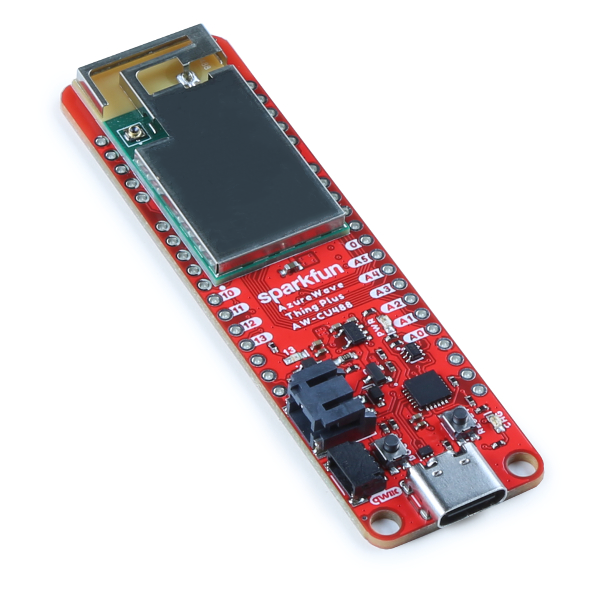
AW-CU488 Thing Plus uses Type C USB to supply power, which is quite common in many smart devices. It also has an Auto Upload Circuit.
Please refer to the following figure and table for the pin diagram and functions.
AW-CU488 Thing Plus Pinmap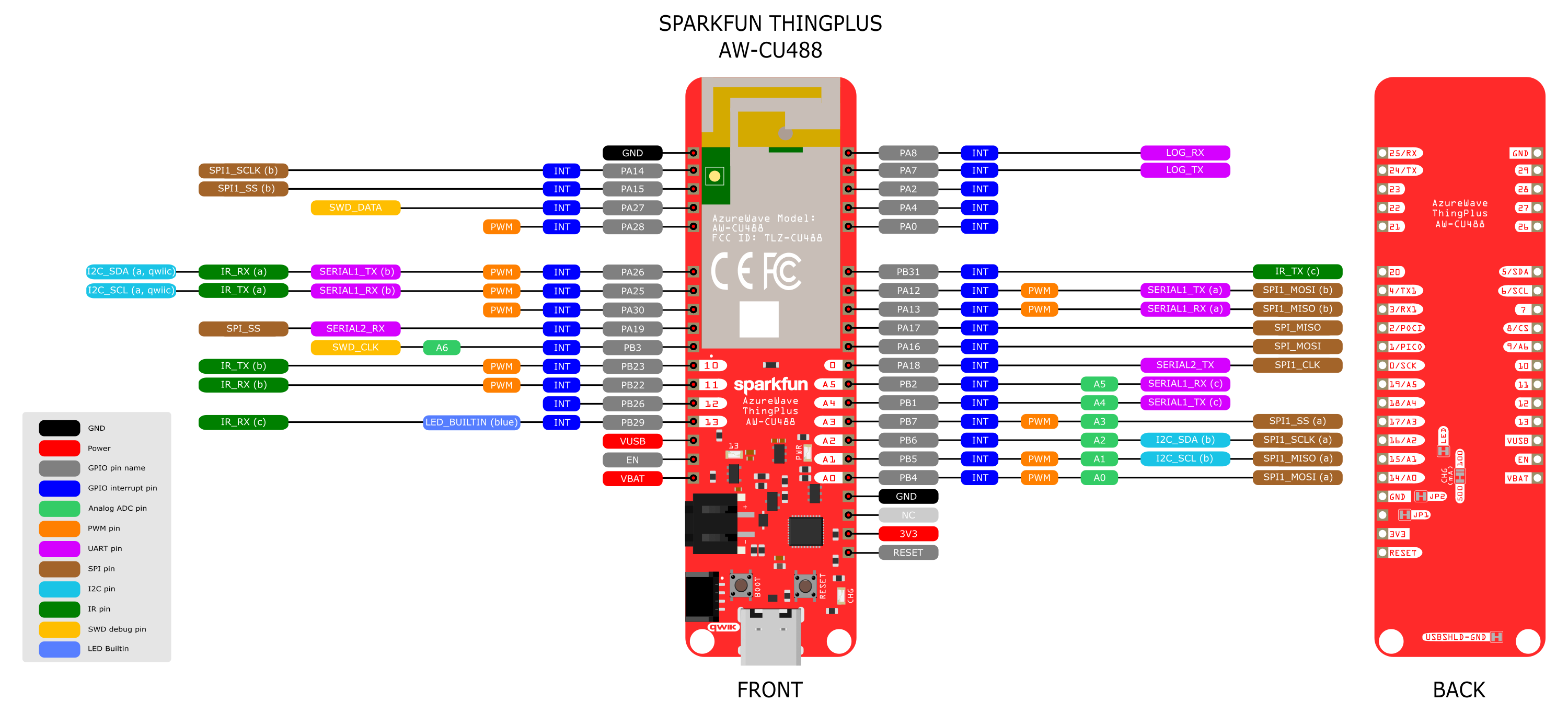
| GPIO pin | GPIO INT | ADC | PWM | UART | SPI | I2C | IR | RGB LED | SWD | |
| 0 | PA18 | ✓ | SERIAL2_TX | SPI_SCLK | ||||||
| 1 | PA16 | ✓ | SPI_MOSI | |||||||
| 2 | PA17 | ✓ | SPI_MISO | |||||||
| 3 | PA13 | ✓ | ✓ | SERIAL1_RX (a) | SPI1_MISO (b) | |||||
| 4 | PA12 | ✓ | ✓ | SERIAL1_TX (a) | SPI1_MOSI (b) | |||||
| 5 | PA26 | ✓ | ✓ | SERIAL1_TX (b) | I2C_SDA (a, qwiic) | IR_RX (a) | ||||
| 6 | PA25 | ✓ | ✓ | SERIAL1_RX (b) | I2C_SCL (a, qwiic) | IR_TX (a) | ||||
| 7 | PA30 | ✓ | ✓ | |||||||
| 8 | PA19 | ✓ | SERIAL2_RX | SPI_SS | ||||||
| 9 | PB3 | ✓ | A6 | SWD_CLK | ||||||
| 10 | PB23 | ✓ | ✓ | IR_TX (b) | ||||||
| 11 | PB22 | ✓ | ✓ | IR_RX (b) | ||||||
| 12 | PB26 | ✓ | ||||||||
| 13 | PB29 | ✓ | IR_RX (c) | LED_BUILTIN (blue) | ||||||
| 14 | PB4 | ✓ | A0 | ✓ | SPI1_MOSI (a) | |||||
| 15 | PB5 | ✓ | A1 | ✓ | SPI1_MISO (a) | I2C_SCL (b) | ||||
| 16 | PB6 | ✓ | A2 | SPI1_SCLK (a) | I2C_SDA (b) | |||||
| 17 | PB7 | ✓ | A3 | ✓ | SPI1_SS (a) | |||||
| 18 | PB1 | ✓ | A4 | SERIAL1_TX (c) | ||||||
| 19 | PB2 | ✓ | A5 | SERIAL1_RX (c) | ||||||
| 20 | PB31 | ✓ | IR_TX (c) | |||||||
| 21 | PA0 | ✓ | ||||||||
| 22 | PA4 | ✓ | ||||||||
| 23 | PA2 | ✓ | ||||||||
| 24 | PA7 | ✓ | LOG_TX | |||||||
| 25 | PA8 | ✓ | LOG_RX | |||||||
| 26 | PA28 | ✓ | ✓ | |||||||
| 27 | PA27 | ✓ | SWD_DATA | |||||||
| 28 | PA15 | ✓ | SPI1_SS (b) | |||||||
| 29 | PA14 | ✓ | SPI1_SCLK (b) |
Set up developing environment
Step 1. OS environment
AW-CU488 Thing Plus (RTL8721DM) board currently supports Windows OS 32-bits or 64-bits, Linux OS (Ubuntu) and macOS. To have the best experiences, please use the latest version of OS.
For any Linux OS (Ubuntu) related issues, refer to https://forum.amebaiot.com/t/ubuntu-linux-environment/2259.
For any macOS related issues, refer to https://forum.amebaiot.com/t/macos-environment/2260.
Step 2. Set up Arduino IDE
From version 1.6.5, Arduino IDE supports third-party hardware. Arduino IDE is used to develop applications on the board, and the Arduino basic examples.
Arduino IDE can be downloaded in the Arduino Website: https://www.arduino.cc/en/Main/Software.
When the installation is finished, open Arduino IDE. Go to “File” → “Preferences”.
Paste the following URL into the “Additional Boards Manager URLs” field:
https://github.com/ambiot/ambd_arduino/raw/master/Arduino_package/package_realtek_amebad_index.json
Next, go to “Tools” → “Boards” → “Boards Manager”:
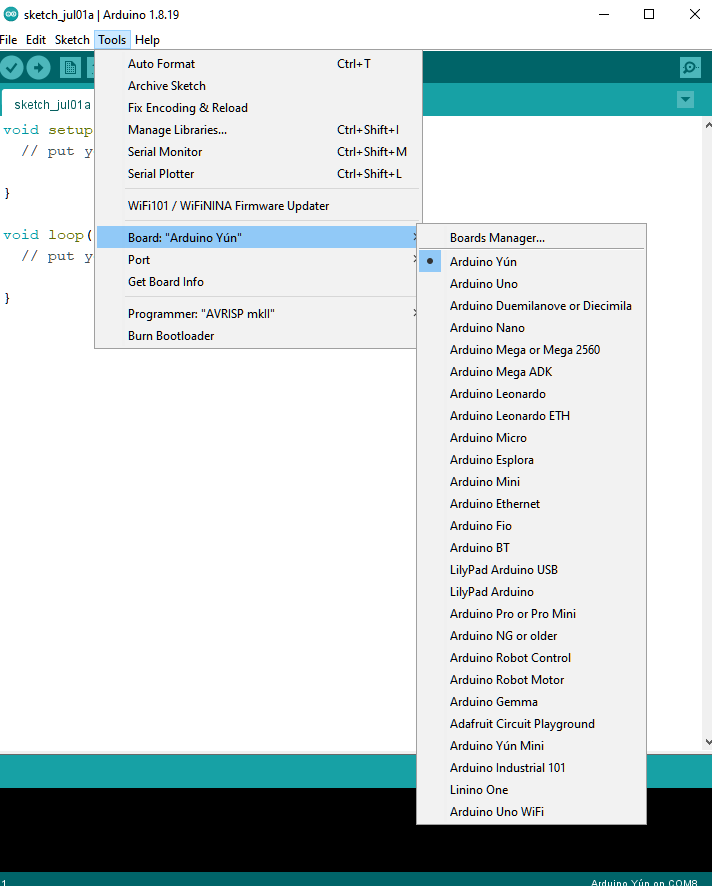
The “Boards Manager” requires several seconds to refresh all hardware files (if the network is in bad condition, it may take longer). Search “Realtek” and find “Realtek Ameba Boards (32-bits ARM Cortex-M33 @ 200MHz)” in the list, click “Install”, then the Arduino IDE starts to download required files for AmebaD family including AW-CU488 Thing Plus.
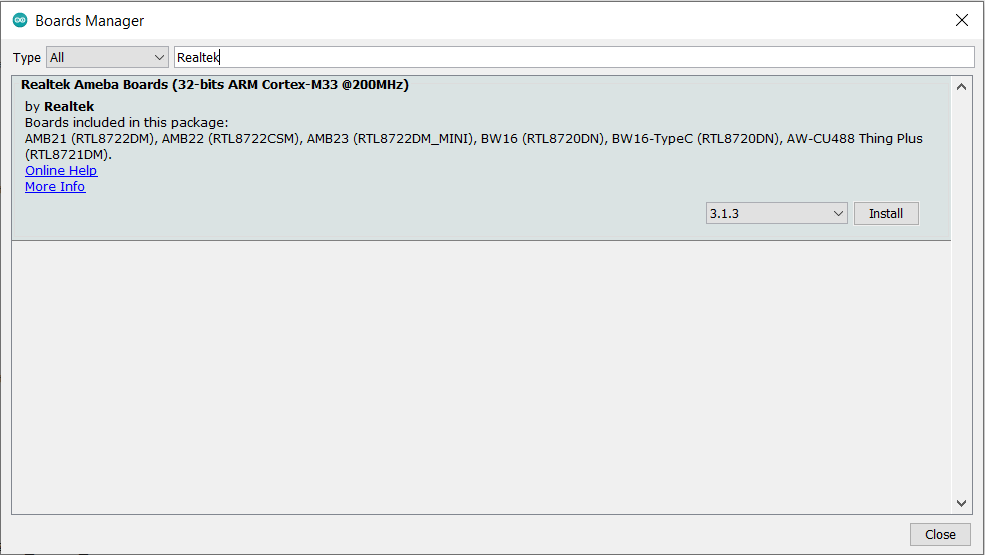
If there is downloading issue (bad internet or no GitHub access), please refer to the following link at “Download/Software Development Kit”. There are 3 sections.
1. “AmebaD_Arduino_patch1_SDK”, please select at least 1 of the SDKs. There are 5 latest released SDK options.
2. “AmebaD_Arduino_patch2_Tools”, please select according to operating system. There are Windows, Linux and macOS.
3. “AmebaD_Arduino_Source_Code”, this section is optional. Download it for the latest source code.
Download the files selected, then unzip (patch 1 and patch 2 are compulsory). There are “Install.doc”/”Install.pdf” for you to refer to installation steps. According to your system, please run the installation tool in the “Offline_SDK_installation_tool” folder.
After the installation, select AmebaD as current connected board in “Tools” → “Board” →“Ameba ARM (32-bits) Boards” → “AW-CU488 Thing Plus (RTL8721DM)”:
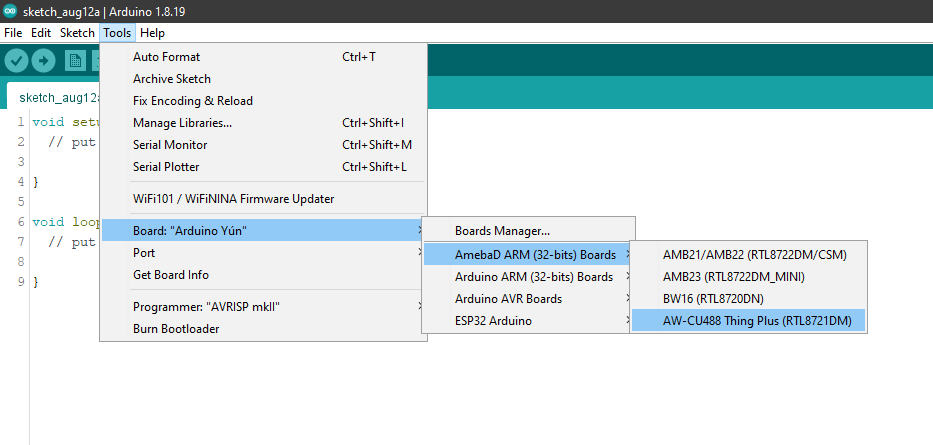
Step 3. Install the Serial Port
First, connect the board to computer via Type C USB:
AW-CU488 Thing Plus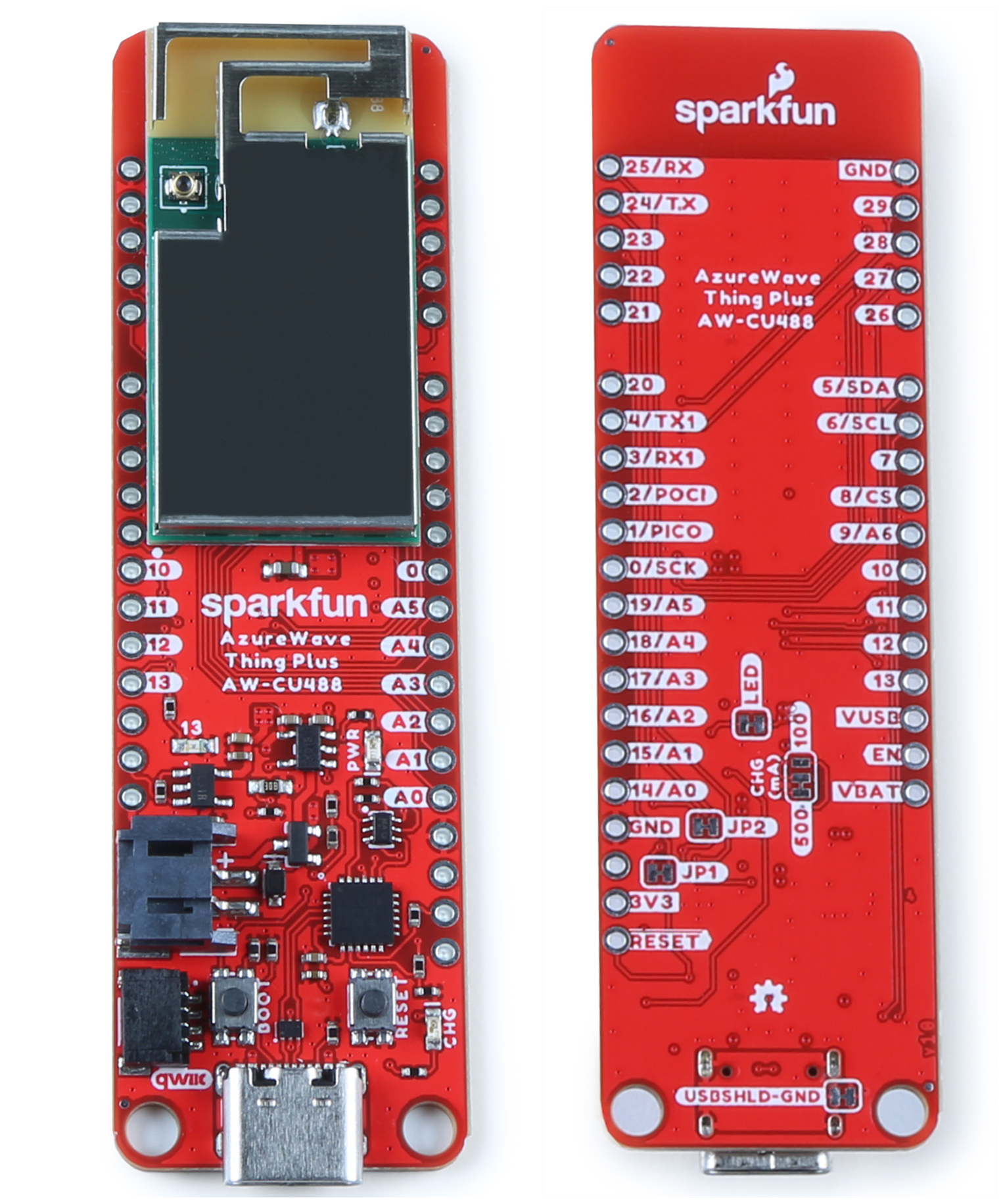
After connected, the USB driver will be automatically installed. If there is any driver issue of connecting board, please go to https://www.silabs.com/developers/usb-to-uart-bridge-vcp-drivers?tab=downloads for the USB driver. Check the COM Port number in the Device Manager for Windows OS user:
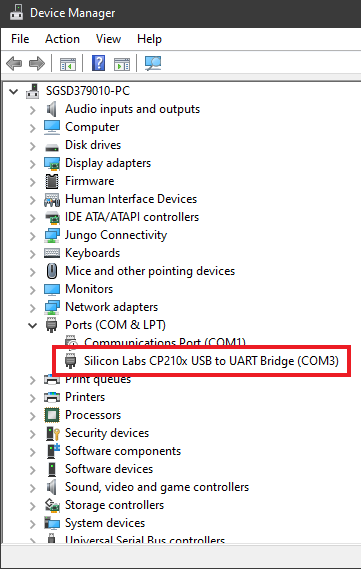
Go to “Tools” → “Port” and select the correct COM port.

Go to “Tools” → “Serial Monitor”, set the baud rate as “115200”, and press the RST button to check the serial port connection.
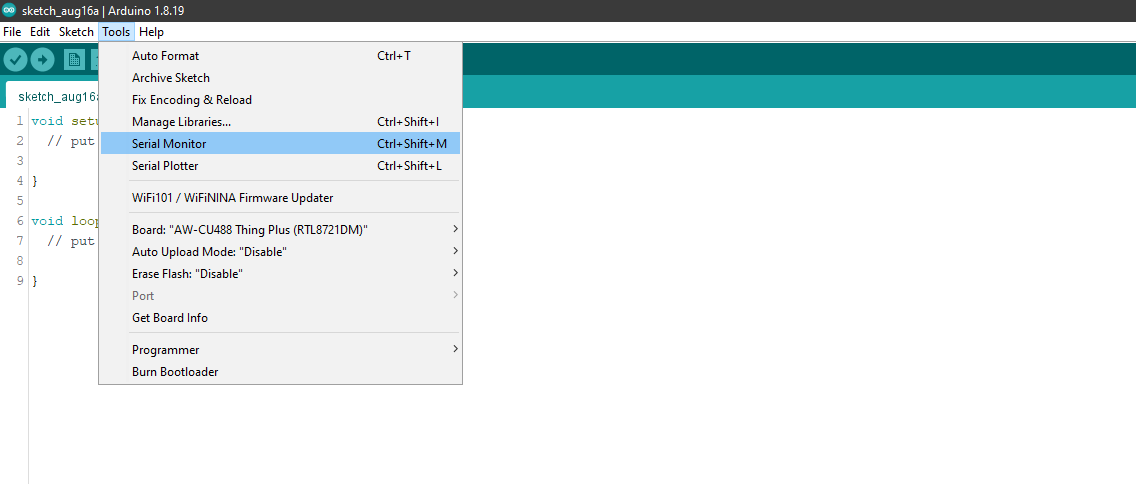
Try the First Example
Step 1. Compile & Upload
Arduino IDE provides many built-in examples, which can be compiled, uploaded, and run directly on the boards. Here, we take the “Blink” example as the first try.
Open “File” → “Examples” → “01. Basics” → “Blink”:

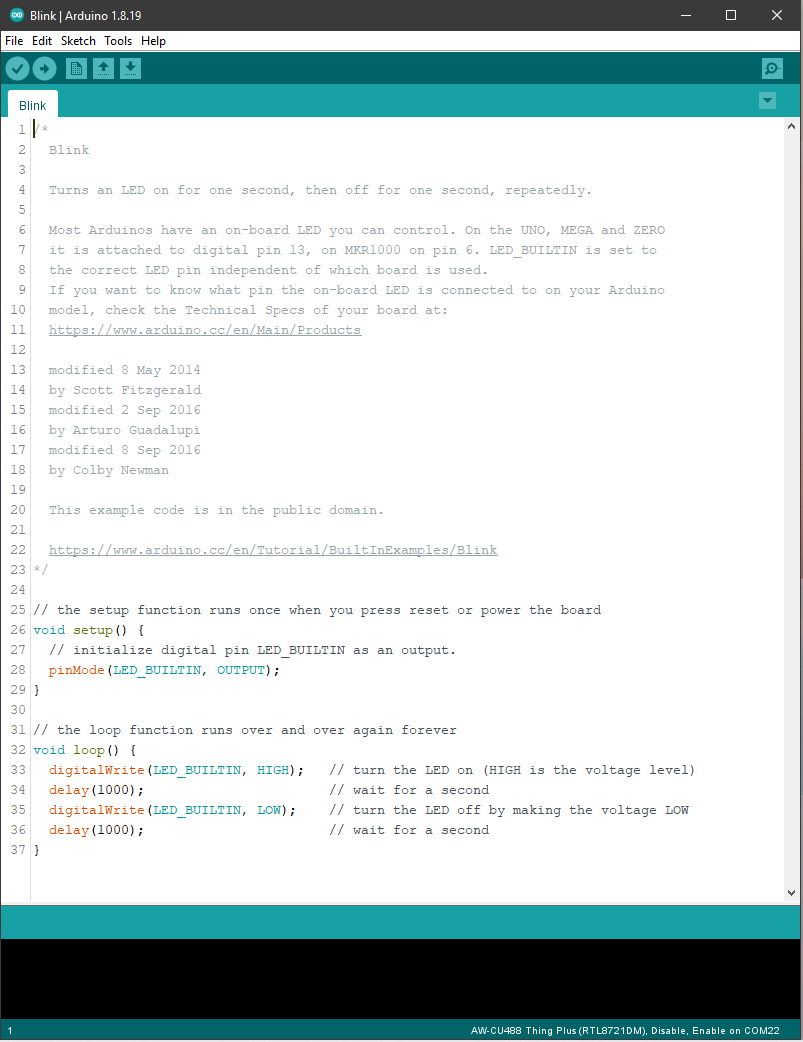
There are onboard LED on AW-CU488 Thing Plus, the default “LED_BUILTIN” is blue.
Next, we compile the sample code directly; click “Sketch” → “Verify/Compile”.
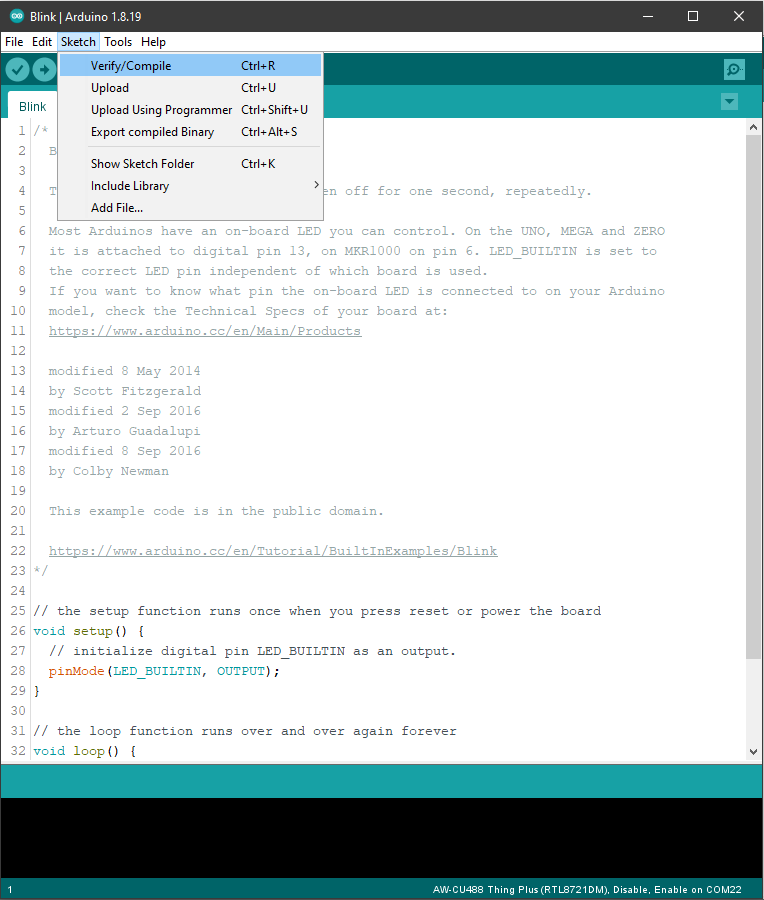
Arduino IDE prints the compiling message in the bottom area of the IDE window. When the compilation is finished, you will get the message as following.

Afterwards, we will upload the compiled code to board.
Remember to enable the Auto Upload Mode. In “Tools” → “Auto Upload Mode” → “Enable / Disable”.

Please make sure the board is connected to your computer, then click “Sketch” → “Upload”
Successful Upload will be shown with a message “All images are sent successfully!”

Step 2.Run the Blink example
The board will be reset automatically, and the onboard LED will start blinking.
In each example, Arduino not only provides sample code but also detailed documentation, including wiring diagram, sample code explanation, technical details, etc. These examples can be directly used on AW-CU488 Thing Plus. Refer to detailed information of the Blink example in the link below:
https://www.arduino.cc/en/Tutorial/BuiltInExamples/Blink
If you encounter any problem, please refer to Q&A.
Tool Feature
Erase Flash

• Enable: erase the image in the flash memory without uploading the current image.
• Disable: upload the user code upon compilation is finished.
“Erase Flash” is default selected as “Disable” to upload the user code.
Standard Lib Enable
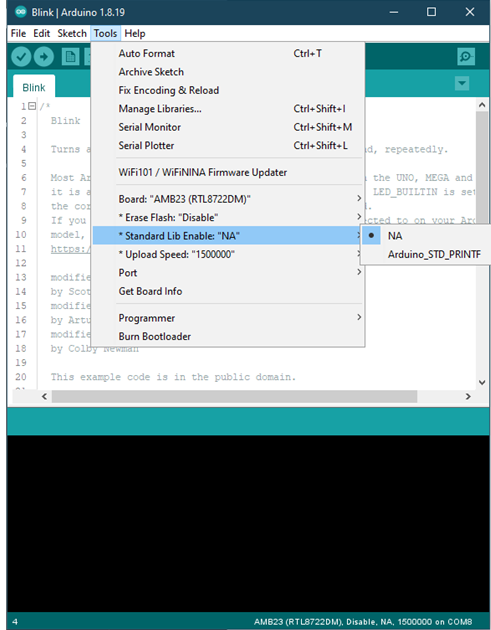
• Arduino_STD_PRTINF: enable the usage of Arduino avr “stdio.h” and “#include ” when using printf
• NA: printf() is using based on standard sdk _rtl_printf()
“Standard Lib Enable” is default selected as “NA”.
Upload Speed

Selection of uploading baud rate at 1,500,000 or 921,600.
